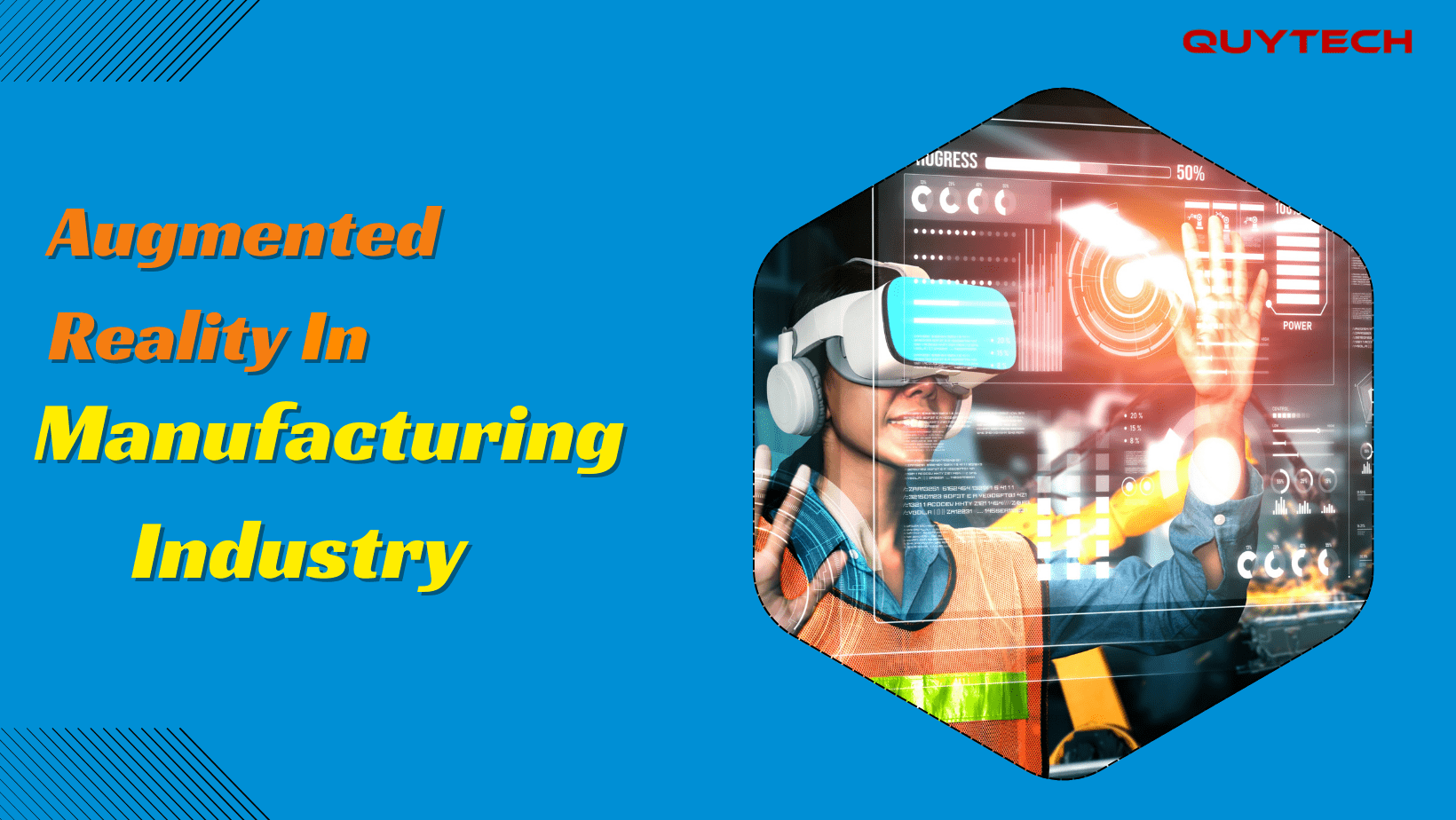Over the last few years, AR has created its big footsteps in various industries. Likewise, Augmented Reality in the manufacturing industry has introduced new opportunities to transform the experience. Different manufacturing industries have started taking advantage of AR with the use of geolocation tags and training guides merged with virtual elements. AR is the best way to address different aspects of the Manufacturing Industry. With the help of glasses, a smartphone, or a tablet the physical environment is overlaid with virtual elements and tips.
Different industries in the field of manufacturers have begun to explore the benefits of augmented reality technology. Such technology helps forecast futuristic results by helping the technical staff and servicemen. AR offers an industrial environment to make a correct decision avoiding risk factors. Hence, AR has developed a trend to improve the manufacturing process at different phases.
Improvements in manufacturing using Augmented Reality
AR is effective in introducing a variety of benefits and improvements in business in the manufacturing sector. In the working field, workers can use AR wearables to analyze various aspects. The worker with the help of AR can visualize a finished product and also identify hazardous functioning situations. In a survey, it is stated that Augmented reality glasses are forecasted to reach around 19.1 million units by 2021.
Augmented reality offers a huge potential to manufacturers to explore its benefits in numerous applications mentioned below.
• Employee Training
• Product Assembly
• Product Maintenance
• Quality assurance
• Product growth
With the use of AR, manufacturers can get rid of manual product assembly. AR can offer an easy and interactive method to learn more while assembling the product. Therefore, using AR lengthy information can be made available in a very vivid way. This can be helpful to engage and understand the critical assembly process hassle less for the employees.
When it comes to product maintenance AR can assist in identifying the reason for the risk of breakdowns. This develops faster and more operative servicing eliminating any potential problems. AR assists manufacturers during service calls of their products to visualize and identify problems properly.
This way manufacturers can understand step-by-step instructions that can be delivered via an AR headset. As a result, the assembly process operates effectively while delivering and responding to the latest information.
The AR solution built a more powerful and intuitive method with remote guidance. This avoids the possibility of miscommunication. Moreover, this allows experts to offer support and perform a task from anywhere. Both experts and technicians can accurately coordinate highlight details with multi-step AR solutions.
The best part of the AR is that products can be inspected and visually compared with the information provided. AR in manufacturing offers effective procedures, highlights, and discards products instantly. Apart from that employees can use mobile devices to compare an assembled vehicle to the original design before delivering it to the customer.
This ensures high-quality assurance from the customer end. As a result, the product can be analyzed in real-time for future use and implementation.
Use case of AR in the Manufacturing Industry
BMW Group Production is converging effectively Augmented Reality applications in the manufacturing field. This helps the employees to view virtually created videos or render images. Thus, such visualizations guide participants through all process steps and provide specific information. AR assists participants in working at their own pace while determining the control over the training. Read more: Source
Ford is an American multinational automaker using the Microsoft HoloLens AR headset to overhaul its design process, which has allowed the company’s designers to be more creative, collaborate better, improve decision-making, as well as work quickly.
In another use case, Lockheed Martin used Microsoft HoloLens headsets to view holographic renderings of an aircraft’s parts and the instructions on how to assemble them. Microsoft HoloLens offers mixed reality solutions to increase communication and improve efficiency. The AR technology reduced assembly time by 30 percent, and digitizing the workflow helped Lockheed Martin increase engineering efficiency to 96 percent. Source
Get a Free Consultation
Bottom line
AR leveraged in the manufacturing industry will significantly be used in the different industrial manufacturing processes. It offers innovative approaches while manufacturing processes to carry out tasks easily and faster. Hence, AR can be considered a more convenient way to enhance the manufacturing process. It offers a solution for users as well as a business prospect.
The main focus is to carry out convenient methodologies. AR created a buzz in the manufacturing industry with more sophisticated functionalities. That is the reason why AR applications are transforming manufacturing processes in every sphere.
See Our work:

We have developed an application to provide training to workers of a huge biorefinery to operate their system. To start with their two procedures, markers need to be scanned by a trainer to proceed with the information display. It includes two functional procedures of the refinery plant with multiple scenes and instructions.
